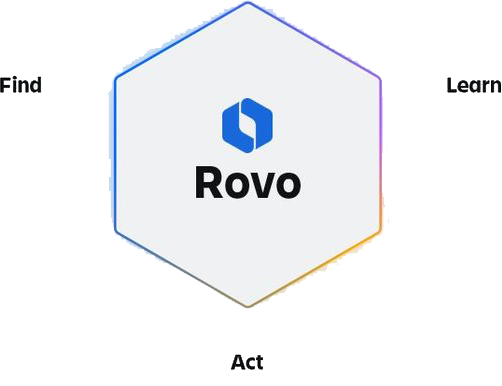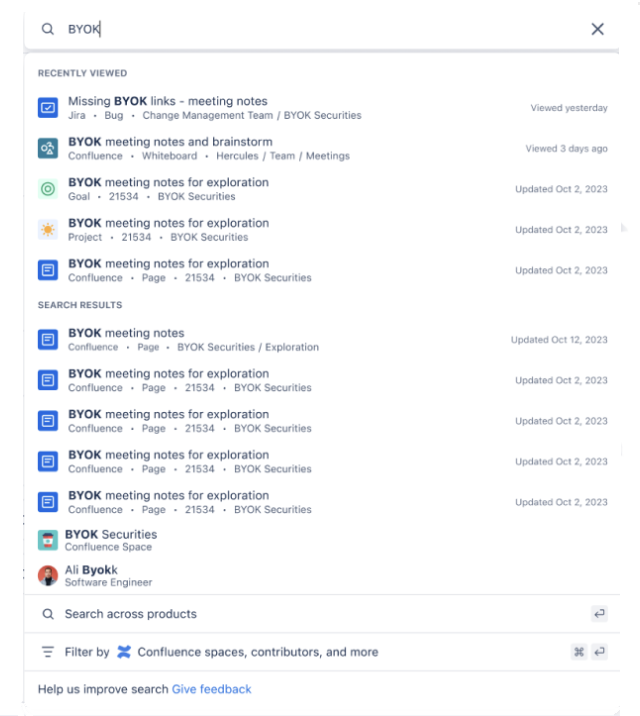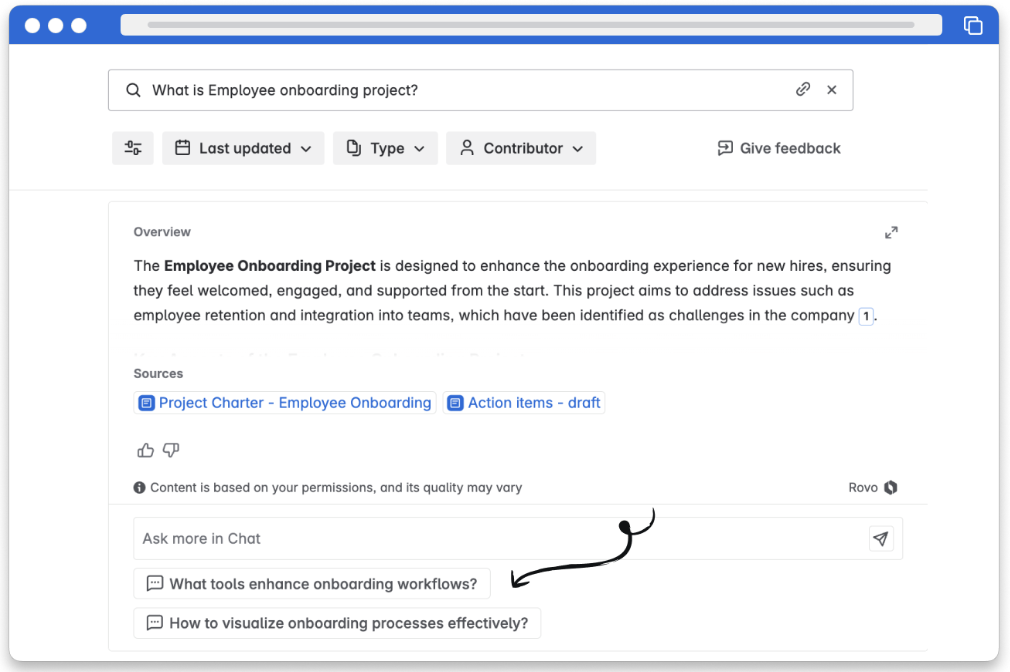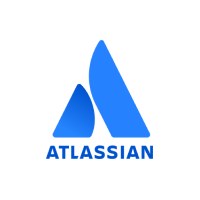Rovo Search: End the Hunt for Hidden Information and Unify Knowledge Silos

Every day, teams burn hours digging through tools or pinging co-workers to track down the information they need to do their jobs. In fact, knowledge workers waste up to 25% of their time looking for answers, according to Atlassian’s 2025 State of Teams report.
Rovo Search, Atlassian’s AI-powered search feature, changes the equation by helping employees find what they need, instantly. It connects tools like Jira, Confluence, Bitbucket, Compass, Google Drive, and SharePoint into a single, unified interface. At its center is the Teamwork Graph, a dynamic knowledge layer that understands how your people, projects, goals, and tools are connected.
Unlike basic enterprise search that returns keyword matches, Rovo interprets intent, respects permissions, and connects related information across your tools. This includes AI-driven results synthesis that prioritizes the most relevant information and suggests next steps.

For example, if you search for “payment service outage,” instead of links to scattered docs, you’ll get:
- Summarized findings from recent incidents in Jira
- Troubleshooting steps from Confluence runbooks
- Related commits from Bitbucket
- Google Drive and SharePoint documents outlining past resolutions
- Slack discussions where the issue was debugged
For more complex queries like, “Why did we move to microservices for user management?” Rovo can reconstruct the full decision trail by connecting architectural notes, performance benchmarks, team conversations, and historical requirements.
This is intelligent knowledge orchestration in action: Rovo Search helps teams quickly understand data, act on it with confidence, and scale decisions across the business. In this post, we’ll show how Rovo Search turns fragmented data into faster decisions and coordinated execution.
The Problems With Traditional Search (and How Rovo Search Solves Them)
Traditional search relies primarily on scanning content for keywords. This results in a flood of semi-relevant hits that force teams to piece together an answer. It often forces teams to sift through irrelevant results, slowing decisions and increasing rework.
What Makes Rovo Search Different
If traditional search is like navigating a dark maze by the light of a birthday candle, Rovo Search is like switching on a spotlight that instantly reveals the quickest path to success.
Rovo Search goes beyond simple keyword matching by leveraging Atlassian’s Teamwork Graph, a rich knowledge layer that maps relationships between people, projects, and tools across your organization. This allows Rovo to understand context, not just text, and deliver insights that reflect how your teams actually work. And because Rovo lives inside the tools your employees already use, it feels like a natural extension of their workflows, not an added step
Here’s an Example:
| Traditional Search | Rovo Search |
| A user types “employee onboarding” into Confluence to get a long list of pages containing those exact words. They would also have to repeat the search across every other tool they want to query. | A user types “employee onboarding” into Rovo Search, which automatically understands the context to surface the most relevant resources (including training guides, HR checklists, and other materials that don’t explicitly have the “employee onboarding” keyword) and summarizes them for fast comprehension. |



